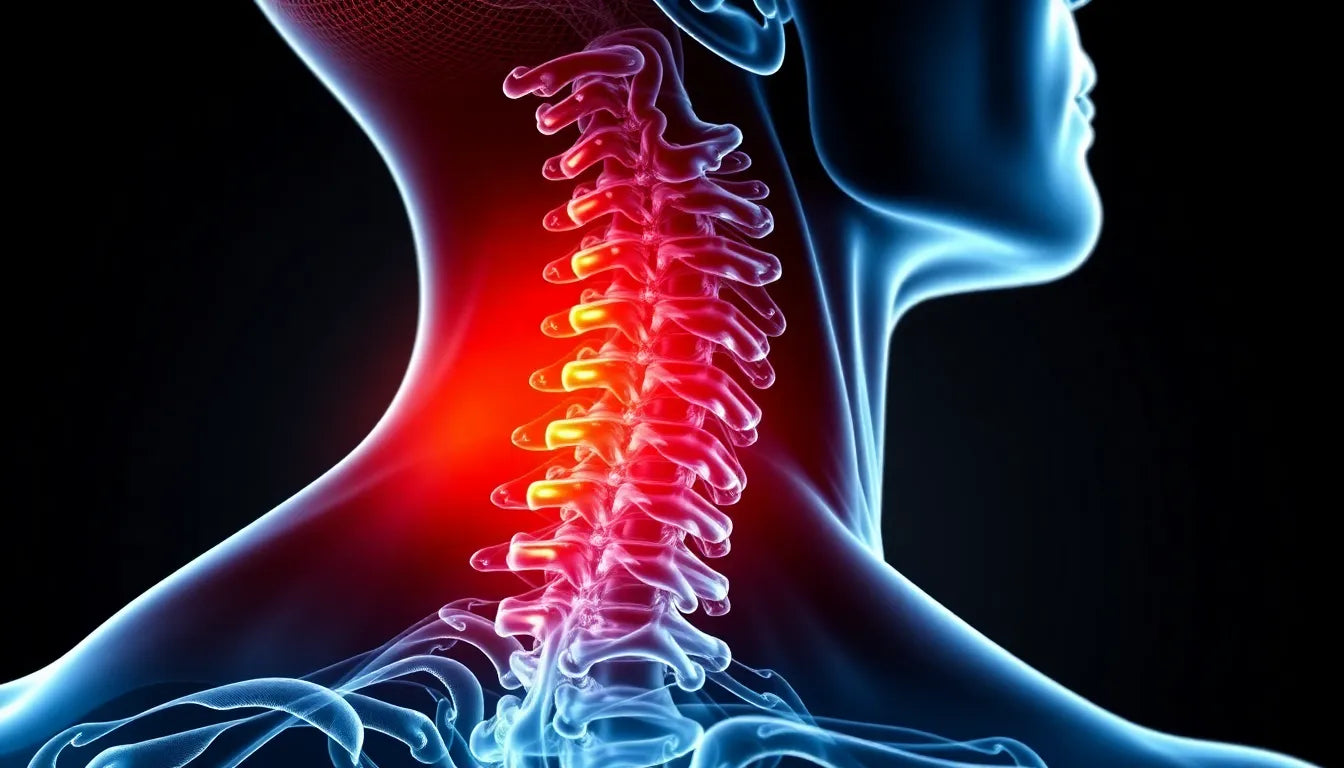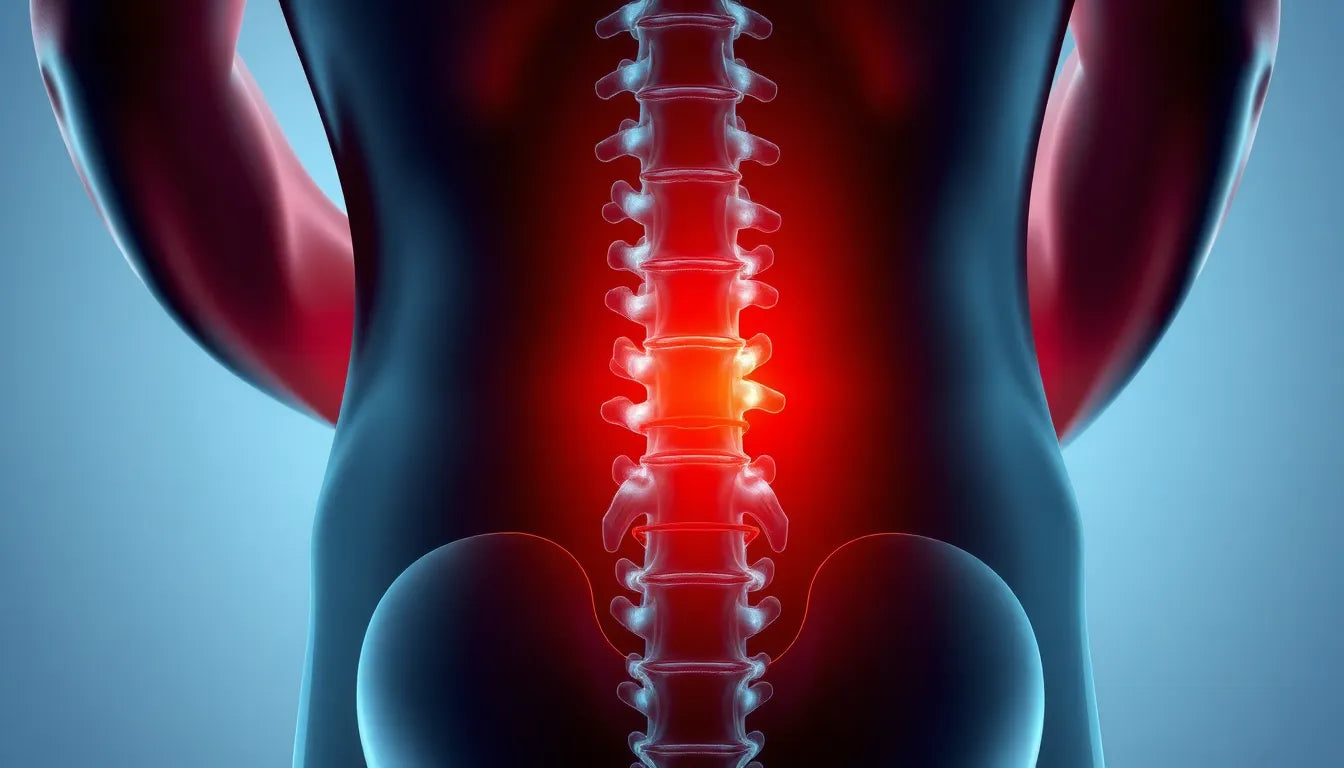The cervical spine, an intricate structure within our neck, plays a crucial role in supporting the head and facilitating a wide range of movements. Comprising seven vertebrae, this part of the spine is not only vital for maintaining posture but also for enabling the flexibility required for everyday activities. However, the cervical spine is susceptible to various disorders, with herniated discs being among the most common. These conditions often manifest through symptoms like pain, numbness, and tingling, which can significantly impact one's quality of life.
uncommon symptoms: vision problems
While many are familiar with the typical symptoms associated with cervical spine issues, there is a subset of patients who experience less common symptoms, such as vision problems. This raises a thought-provoking question: could a herniated disc in the neck be influencing your vision? Although it may seem unlikely, some individuals report visual disturbances that coincide with cervical spine disorders, prompting a deeper investigation into this potential connection.
hook: the unseen connection
The possibility of a link between cervical spine issues and vision problems is both mysterious and controversial. The notion that a herniated disc could contribute to visual disturbances is not widely recognized, yet it is a subject of growing interest and debate within the medical community. Exploring the potential mechanisms behind this connection could provide valuable insights into how cervical spine disorders might influence visual health. In this blog post, we will delve into the current understanding of this intriguing relationship, examining the evidence and theories that suggest a link between neck discs and vision woes.
visual disturbances in cervical spine disorders
While cervical spine disorders are commonly associated with symptoms like pain and numbness, a subset of patients report experiencing visual disturbances as well. These visual symptoms can vary widely, including blurred vision, double vision, eye strain, halos around lights, sensitivity to light, and even transient vision loss. Such symptoms can be particularly concerning as they impact daily activities and overall quality of life.
incidence and controversy
Studies have shown that visual disturbances, although not as common as other symptoms, do occur in patients with cervical spine issues. Blurred vision, for instance, has been reported in approximately 2.6% of cases. Moreover, up to 22.4% of patients with cervical spine disorders experience atypical symptoms, which may include visual disturbances. Despite these findings, there remains a significant controversy within the medical community regarding the exact nature and cause of these symptoms. The lack of a clear consensus underscores the complexity of the relationship between cervical spine disorders and visual issues, prompting further research and discussion.
potential mechanisms linking neck discs and vision
Several speculative mechanisms have been proposed to explain the link between herniated discs in the neck and vision problems. One possibility is nerve compression, where a herniated disc might impinge on nerves that affect ocular pathways, leading to visual disturbances. Another theory suggests vascular compromise, where reduced blood flow to the eyes due to cervical spine issues could result in vision problems. Additionally, autonomic dysfunction, which impacts visual processing, might be a contributing factor. These mechanisms highlight the need for comprehensive assessments to rule out primary ocular conditions and to better understand the cervical spine's role in visual health.
diagnosis and treatment approaches
Diagnosing the link between herniated cervical discs and vision problems typically involves a combination of neurological examinations, physical assessments, and ocular evaluations. This comprehensive approach helps to ensure that primary eye conditions are ruled out and that the cervical spine is thoroughly assessed. Treatment strategies for herniated cervical discs often begin with conservative methods, such as medication, physical therapy, and rest. In cases where symptoms are severe or persistent, surgical intervention may be considered. Although the direct causality between cervical spine treatment and improvement in visual symptoms remains unproven, some patients do report relief following appropriate interventions.
improvement post-treatment
There are documented cases where patients have reported an improvement in visual symptoms following treatment for cervical spine disorders. While this suggests a potential link, it's important to note that the direct causality between cervical spine treatment and the resolution of vision problems remains unproven. However, the improvement in symptoms post-treatment indicates that addressing cervical spine issues might play a role in alleviating some visual disturbances. This underscores the importance of a holistic approach to treatment, where both cervical spine health and visual symptoms are considered in tandem.
educational insights and patient stories
Understanding the impact of cervical spine disorders on vision can be enhanced through patient stories and case studies. For instance, one patient, after undergoing physical therapy for a herniated disc, reported significant relief from chronic eye strain and sensitivity to light. Such experiences highlight the importance of professional medical evaluation and personalized treatment plans. They serve as a reminder that while not all vision problems may be directly linked to cervical spine issues, addressing neck health can contribute to overall well-being.
ergonomic and lifestyle tips for cervical spine health
Maintaining cervical spine health is crucial not only for preventing pain but also for potentially reducing atypical symptoms like vision problems. Here are some practical tips:
- Ergonomic adjustments: Ensure that your workspace is ergonomically sound. This includes having your computer monitor at eye level and using a chair that supports the natural curve of your spine.
- Regular exercises: Engage in exercises and stretches that strengthen the neck muscles. Neck rolls, chin tucks, and shoulder shrugs can be beneficial.
- Posture awareness: Be mindful of your posture, especially during prolonged activities. Avoid slouching and take regular breaks to move around.
- Lifestyle choices: Incorporate activities that promote overall spine health, such as yoga or swimming, which are gentle on the neck.
Frequently Asked Questions
Can a herniated disc in the neck cause vision problems?
While it is not common, there is some evidence to suggest that herniated discs in the neck can contribute to vision problems. The exact mechanism is not fully understood, but nerve compression, vascular issues, and autonomic dysfunction are potential factors.
What are the common symptoms of a herniated cervical disc?
Typical symptoms of a herniated cervical disc include neck pain, numbness, tingling in the arms or hands, and sometimes weakness. Visual disturbances are less common but have been reported.
How are visual symptoms related to cervical spine issues treated?
Treatment often begins with conservative approaches such as medication, physical therapy, and rest. Surgery may be considered in severe cases. Addressing the cervical spine issue can sometimes lead to an improvement in visual symptoms.
Is there a definitive test to confirm the link between neck discs and vision problems?
Currently, there is no definitive test to confirm this link. Diagnosis involves a combination of neurological, physical, and ocular assessments to rule out primary eye conditions and evaluate the cervical spine.
What lifestyle changes can help manage cervical spine health?
Adopting ergonomic practices, engaging in regular neck-strengthening exercises, maintaining good posture, and incorporating spine-friendly activities into your routine can help manage cervical spine health and potentially reduce atypical symptoms.


















